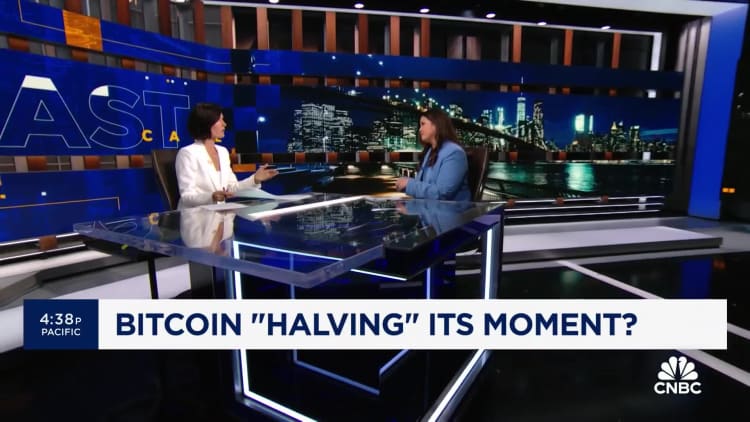Omar Marques | Lightrocket | Getty Images
Bitcoin rose above $64,000 at one point on Friday, rebounding from a drop below the $60,000 mark, as the cryptocurrency continues to experience volatility ahead of the upcoming halving event.
The price of bitcoin hovered at the flat line, around $63,800.00, according to Coin Metrics.
Bitcoin had fallen below the $60,000 threshold late Thursday.
The volatile trade comes ahead of the upcoming Bitcoin halving, which is slated to take place this week. This is when the rewards for bitcoin miners are slashed in half. Halving happens every four years and is written in the code of the Bitcoin blockchain. The result is a slowing supply of bitcoin into the market.
In prior bitcoin cycles, the halving preceded a bull run for the cryptocurrency.
Crypto prices were impacted by Iran’s unprecedented drone and missile attack on Israel last weekend. On Saturday, bitcoin was hovering around the $70,000 mark.
But there are other headwinds for bitcoin at the moment.
“The geopolitical tensions were not the sole factor affecting crypto markets since last week. We can see similar bearish sentiments across miners’ behavior, trading volumes, ETF flows and the news coming out of US inflation data,” analysts at cryptocurrency bank Amina said in a research note Friday.
Amina analysts said miners are selling their bitcoin ahead of the halving. Since halving reduces their rewards, there may be some operations that become unprofitable. So miners are looking to shore up their balance sheets.

“Currently, miner balances are near an all-time low. This comes at the back of heavy selling from miners as they scramble to take profits ahead of the halving,” Amina said in the note.
Net flows through the spot bitcoin exchange-traded funds have been negative since last week, according to Amina analysts — which is putting further pressure on bitcoin.
It has been another strong year for bitcoin, whose price is up 50%. Bitcoin hit an all-time high above $73,000 in March.
The bitcoin exchange-traded funds, which were approved in the U.S. earlier this year, drove much of the gains last year and into 2024.

